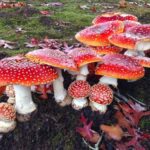Trademark Lawyer Chelsie Spencer was published in the State Bar of Texas Intellectual Property Section’s TipSheet Vol. 13 No. 2, discussing the USPTO’s treatment of trademark applications for goods containing cannabidiol. To view the article, continue reading below or click here.
Cannabidiol: The Disjointed Stance on the Cannabinoid at the USPTO
Cannabidiol (CBD) is a natural phytocannibinoid found in the Cannabis sativa plant. CBD is devoid of psychoactive activity and will not cause a user to experience hallucinogenic or other psychoactive effects. In fact, studies show that CBD counteracts the psychoactivity of tetrahydrocannabinol (THC), the primary psychoactive cannabinoid found in cannabis. CBD has been hailed as a miracle compound, with many clinical studies finding that its analgesic, chemopreventitive, and anti-inflammatory properties may be used in a variety of conditions ranging from arthritis, epilepsy, multiple sclerosis, post-traumatic stress disorder, depression, anxiety, cancer, and more.
The CBD industry is slated for rapid growth, with a projected 700% expansion by 2020, reflecting a two-year scale growth of an industry valued last year at $202 million to $2.1 billion. The entire legal cannabis sector (within the thirty-one states permitting either recreational or medicinal cannabis) has a projected value of $57 million by 2027, with the recreational market accounting for 67% of spending and the medicinal market accounting for the remaining 33%. Thus, it is no surprise that those in the hemp and cannabis industries are seeking trademark protection for their goods and services.
Currently, however, cannabis goods are prohibited from obtaining federal trademark registration due to the Lawful Use Rule, as cannabis remains a Schedule I substance under the Controlled Substance Act (CSA). See 21 USC §§ 812, 841(a)(1), 844(a); TMEP § 907. Lacking an analogous rule, the Patent Office has issued a myriad of patents covering marijuana and marijuana products since 1942. The USPTO currently has granted roughly five hundred active patents in the cannabis field. What is a cannabis company which can patent a product but not register an associated trademark to do?
Naturally, companies are relying on common law rights and filing state trademark applications in permissive states. At the federal level, they file applications on ancillary goods in the hope that the zone of natural expansion will protect corresponding cannabis goods if cannabis becomes legalized federally. For example, Seattle-based Cannabis Basics sells cannabis-based topicals and, in 2015, registered its logo mark for ancillary topicals that do not contain THC or other cannabis extract. U.S. Trademark Reg. No. 4797653. If a cannabis company produces a cannabis brownie, it may add production of a hemp, CBD, or plain brownie to its product line and seek registration of a mark in connection with that ancillary good. However, obtaining registration on that ancillary good containing hemp or CBD is far from an easy process.
The CSA’s definition of “marijuana” excludes mature stalks of the cannabis plant, fiber derived from the stalk, oil or cake made from the seeds of the cannabis plant, and “any other compound, manufacture, salt, derivative, mixture, or preparation of such mature stalks (except the resin extracted therefrom), fiber, oil, or cake, or the sterilized seed of such plant which is incapable of germination.” Under the exclusion, certain products comprising excluded portions of the Cannabis sativa plant can be lawfully sold in interstate commerce.
In 2010, the USPTO quietly added “processed plant matter for medicinal purposes, namely, medical marijuana” to the Acceptable Identifications of Goods and Services Manual. Applications for the new acceptable ID followed. See U.S. Trademark Serial No. 85083993 (abandoned Oct. 16, 2010). A mere four months later, the Office removed the addition, called the inclusion an error, and foreclosed the possibility of registration for medical marijuana products.
The first trademark application filed for a good that included CBD was PROCANA, a standard character mark for, among other goods, “dietary supplements containing CBD for therapeutic uses.” U.S. Trademark Reg. No. 86099419. The application was filed in 2013 and proceeded to registration by 2014. Others soon followed, some of which did not even merit an initial refusal based on the inclusion of CBD in the goods description. See, e.g., U.S. Trademark Serial Nos. 86455188; 86512991; 86591721. Since those initial registrations, the Office has struggled to process applications for goods derived from Cannabis sativa that do not qualify as Schedule I substances, such as compliant CBD.
For many years, arguments have abounded regarding the legal status of CBD, and the Department of Justice and Drug Enforcement Agency (DEA) have only compounded the confusion through a variety of conflicting announcements and regulations in recent years. When the DEA itself has a history of misunderstanding and inconsistency for a drug which it is tasked with regulating and enforcing, one can certainly expect confusion at the USPTO to follow, and it has. In December 2016, the DEA published its “New Drug Code 7350” (NDC 7350), which expanded the CSA “marijuana” definition to include extracts and derivatives, despite prior express exclusion from the CSA. 81 Fed. Reg. 90,194 (to be codified, at the time, at 21 C.F.R. pt. 1308). NDC 7350 defined “marijuana extract”as extract “containing one or more cannabinoids that has been derived from any plant of the genus cannabis, other than the separated resin (whether crude or purified) obtained from the plant.” After significant pushback from the hemp and CBD industries and the public, the DEA issued a clarifying statement to NDC 7350 in March 2017: Its newly announced rule on extracts included only those extracts falling with the CSA definition of marijuana.
Yet even after the clarifying statement, the USPTO continued to interpret NDC 7350 as classifying nearly all CBD as a Schedule I substance, leading to a flurry of refusals for applications containing CBD in the identified goods and services. Overcoming refusals became nearly impossible, even for products such as soap containing trace amounts of CBD that could have been derived from the compliant cannabis stalk or seed. Interestingly, at least one application sailed through prosecution during this time with minimal hurdles. See U.S. Trademark Reg. No. 5274581.
In one 2017 CBD-based refusal, the Examining Attorney proffered that “CBD cannot be derived from industrial hemp because it does not occur in industrial hemp.” See Office Action Outgoing for U.S. Serial No. 87330072 (Oct. 23, 2017). Another 2017 refusal found that “CBD cannot be extracted from the cannabis plant without containing, at a minimum, trace amounts of THC.” See Office Action Outgoing for U.S. Serial No. 87443992 (Dec. 8, 2017). Essentially, the Office began to conclude that products containing more than trace amounts of THC must necessarily be derived from the Cannabis sativa flowering bud or leaves. This conclusion is incorrect. Many of the CSA-excluded portions of the Cannabis sativa plant do indeed contain CBD. In some instances, a minimal trace amount of a prohibited substance from the marijuana plant can contaminate an excluded portion during growth or harvest. For example, a small quantity of resin may adhere to stalk or seed surfaces or contamination may arise from human error, such as trace resin on a gloved hand or machine during harvest. Even if that negligible trace amount presents in testing, it can be eliminated through proper processing and manufacturing processes.
To the relief of those in the CBD industry, the DEA recently issued an internal directive, clarifying that
[p]roducts and materials that are made from the cannabis plant and which fall outside the CSA definition of marijuana are not controlled under the CSA. Such products may accordingly be sold and otherwise distributed throughout the United States without restriction under the CSA or its implementing regulations. The mere presence of cannabinoids is not itself dispositive as to whether a substance is within the scope of the CSA; the dispositive question is whether the substance falls within the CSA definition of marijuana.
U.S. Drug Enforcement Agency. DEA Internal Directive Regarding the Presence of Cannabinoids in Products and Materials Made from the Cannabis Plant (May 22, 2018). Thus, the Office began to conclude that products containing more than trace amounts of THC must necessarily be derived from the Cannabis sativa flowering bud or leaves. This conclusion is incorrect. The legality of CBD depends very much on its source.
Since that time, the USPTO has employed incoherent and ever-changing methodology in refusals for applications perceived to involve CBD or hemp. Due to the lack of cohesiveness, the examination process leads to inconsistent results, with some applications for CBD goods sailing through registration with mere cursory statements regarding compliance. See U.S. Trademark Reg. No. 5471629 (amended to Supplemental Register) (no inquiry by Examining Attorney as to “other lawful sources” noted in the goods description; Office Action overcome via single line e-mail stating “[o]ur products comply with the controlled substances act”).
However, Examining Attorneys have also required applicants to certify that the goods are not a controlled substance, to identify the source of the product material, and to produce product brochures and other informational materials. In the past six months, I have received Office Actions which, in addition to the above inquiries, ask applicants to identify specific elements of the plant derivatives, to explain processing methods and extraction methods, to explain manufacturing methods, to produce crop analysis documents, to address DEA regulations, to address pending Food and Drug Administration (FDA) clinical investigation, and to address refusals under the Food, Drug, and Cosmetic Act (FDCA). Many of these inquiries seek proprietary company information and trade secrets.
To process a CBD application in this environment requires a high level of knowledge of relevant cannabis laws, including the CSA, the Farm Bill, FDA regulations, DEA regulations, DOJ rules and directives, and the FDCA. The responder must possess a technical understanding of harvest, extraction, and processing techniques, which rapidly change with new innovation and development every day. If that subject realm is not overwhelming enough, detailed scientific understanding of the Cannabis sativa plant itself, which is also subject to frequent change due to genetic modifications, is required. For example, if a potential client seeking registration comes into your office with a specimen of their CBD good and informs you during the consultation that the CBD oil in the product was derived directly from the trichomes of the cannabis plant but subjected to no further extraction or processing, you need to instruct that applicant to leave, as he has just brought a Schedule I controlled substance into your office.
Cannabis laws and regulations are rapidly changing at both the federal and state level on a weekly basis and conflicting state regulations merely compound the issues. In Texas, the only non-criminal cannabis statute permitting use is the Compassionate Care Act, a restrictive act for qualified intractable epilepsy patients who must surpass numerous restrictions to obtain a prescription from a qualified, registered physician under the Act. Though the law was enacted in 2015, the first patient, a six-year-old girl suffering from intractable epilepsy, received her medication in February 2018.
On the criminal side, there is certainly an argument that CBD, in addition to synthetic cannabinoids and analogous isomers of THC, remain controlled substances in Texas under the Health and Safety Code. In 2016, the Texas Department of Public Safety’s (DPS) general counsel publicly stated that DPS would not pursue CBD prosecutions for goods with 0% THC due to legal ambiguities. However, local police departments have begun raiding CBD retail shops, seizing shipments of hemp or CBD, seizing CBD goods, and charging end-users under 0% THC tolerance policies.
Though your client may obtain federal trademark registration and thus an implicit acknowledgement that the good is a lawful good in commerce from the USPTO, the police may still come knocking on their door. Welcome to the wild west of hemp and CBD branding and compliance issues.
Chelsie Spencer is an attorney with Ritter Spencer Cheng PLLC in Addison. She is licensed in Texas and Florida, both states with permissive medical marijuana statutes. Her primary practice is in trademark and copyright law, transactional and litigation. She also practices in the areas of medical marijuana, hemp, and CBD and represents clients within those industries for business and compliance issues.







